Jade Plant Food Fertilizers – Natural and Bagged
Jade being a light feeder prefers a balanced fertilizer. Some additional micro and macronutrients like magnesium, manganese, calcium, etc, when added to soil do help jades to thrive even better.
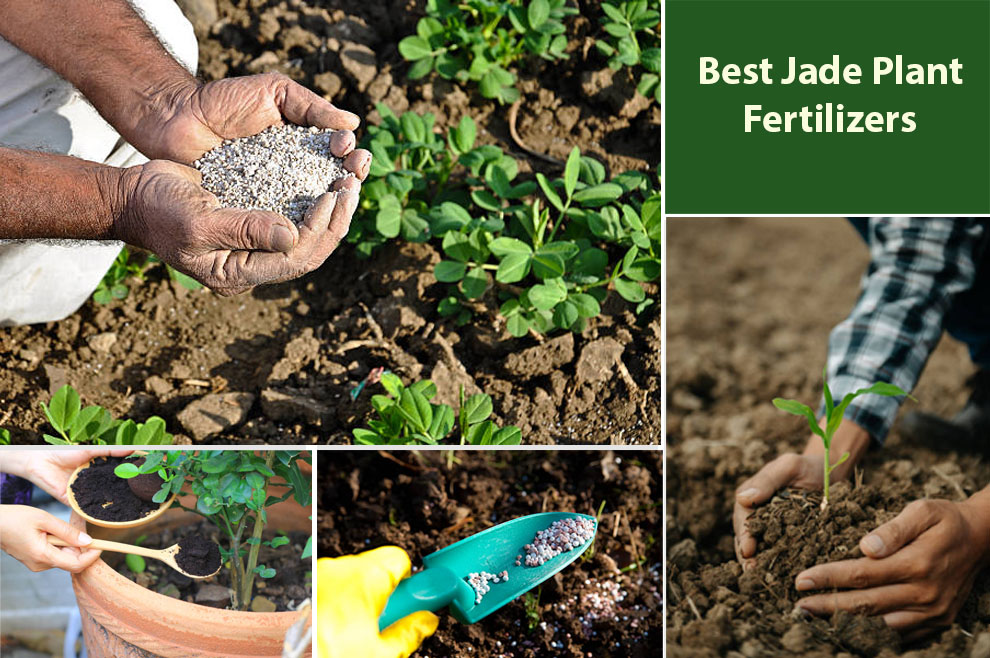
Native to South Africa, Jade plants thrive in USDA hardiness zones ten through eleven. The plant enjoys temperatures between sixty-five and seventy-five degrees, with nighttime temperatures between forty and fifty-five degrees.
A good jade plant fertilizer with a balanced NPK (10-20-10) and proper care can help to achieve a healthy and long life cycle.
Jade plant varieties are slow-growing houseplants. Hence, they do not demand heavy feeding. But some fertilization surely helps.
Opt for a houseplant fertilizer in the form of water-soluble feeds, ready-to-use pumps, slow-release pellets, or spikes. Further, always apply the water-soluble fertilizer at half strength to prevent over fertilizing.
Experts recommend using watered-down liquid fertilizer twice a year during its active growing season. Always ensure that the feed has a balanced NPK ratio of 10-20-10, and do not fertilize during winters.
Best Fertilizer For Jade Plant
- Top Liquid Fertilizer for Jade Plants – Miracle-Gro Succulent Plant Food
- Smart Release Fertilizer Pick – Osmocote Smart-Release Plant Food Plus Outdoor & Indoor
- Jade Fertilizer Spikes – Miracle-Gro Indoor Plant Food Spikes
- Easy-to-Use Fertilizer – Jobe’s 06703 Succulent Fertilizer Spikes
Jade Plant Nutrients (Micro & Macro)
Jade plants need nitrogen, phosphorus, and potassium like most plants do.
In addition, they need micronutrients like
- Copper
- Zinc
- Iron
- Manganese
- Chloride
- Molybdenum
- Boron
And Macronutrients like
- Hydrogen
- Sulfur
- Magnesium
- Sodium
- Carbon
- Oxygen
- Calcium
Nitrogen is for assembling enzymes for different cellular functions and building the plant body.
Potassium supports the plant cells in transporting carbohydrates, nutrients, and water and triggers different enzymes. These help with flowering.
Phosphorous helps the plant prepare food and boosts root growth.
Jade Plant Fertilizer Ratio (N-P-K)
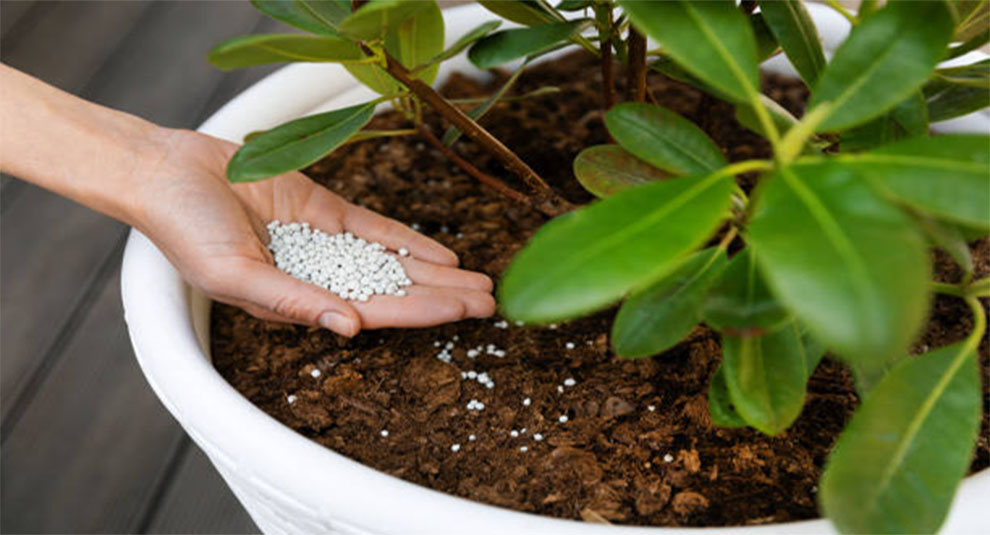
The jade fertilizer ratio should be 1:2:1 (NPK). The fertilizer should have a balance of micronutrients and macronutrients and serve different functions to help maintain the plant’s overall health.
Amongst the various nutrients required by the plant – NPK or Nitrogen, Phosphorous, and Potassium are primary and inevitable.
Fortunately, they are present in almost all kinds of fertilizers. Because Jade plants thrive in nutrient-poor desert soil, they demand water-diluted, weak feeds with 1:2:1 NPK.
But you can also choose natural fertilizers for jade plants comprising eggshells, kitchen waste, coffee grounds, molasses, fish water, green tea, or banana peels. But you can easily find inorganic or premium feeds too.
Even though overfeeding with organic fertilizers does not damage the plant, they may lower the pH and heighten soil acidity.
Moreover, using inorganic fertilizers frequently can inflict severe danger on the plant. In addition, they may also release several dangerous by-products into the environment.
The Best Plant Food for Jade Plants
Knowing the nutrients jade plant needs, let us check out the four best feed options for Jade plants:
1. Top Liquid Fertilizer – Miracle-Gro Succulent Plant Food
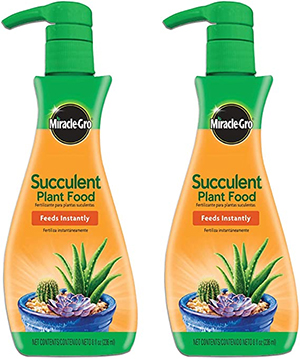 |
Check price on Amazon |
This Miracle-Gro fertilizer feeds the plants instantly and is one of the best picks to meet the jade plant fertilizer requirements. You can use it for succulents, including cacti, jade, and aloe, and mix it with water or apply it directly into the soil.
How to use it?
You must apply the foam directly to the water and the soil. Rinse the foam from the leaves while watering. Two pumps suffice if you have a smaller pot, but pour five pumps if you have a larger container. You can apply once a week for the best results.
2. Smart-release fertilizer – Osmocote Smart-Release Plant Food Plus Outdoor & Indoor, 8 lb.
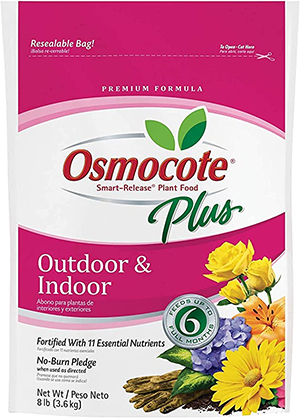 |
Check price on Amazon |
It is an original slow-release plant food that underwent decades of rigorous field testing, confirming its effectiveness with diverse plant species in various soil conditions and climates. Every homogeneous granule contains 15-9-12 NPK and several secondary and micronutrients that can feed the plant for six months.
One of the standout features of this plant food for jade plants is that the soil temperature monitors how Osmocote releases the nutrients and how these nutrients get absorbed by the plants.
Hence, feeding and replenishment are in complete sync. It is a mistake-proof feed. So, even if you overapply up to three times the recommended rate, it will not burn the plant.
How to use it?
- Sprinkle a scoopful of plant food every four square feet or two gallons.
- Mix it into the soil’s top one to three inches.
- Water the plants regularly.
- Reapply the plant food every six months.
3. Fertilizer spikes: Miracle-Gro Indoor Plant Food Spikes
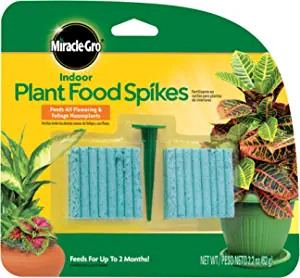 |
Check price on Amazon |
Miracle-Gro jade plant fertilizer is an excellent choice for achieving vibrant and beautiful houseplants as they are full of all the micronutrients that indoor plants seek. Once done, you are sorted for a long time.
So, insert it and patiently wait for happy, healthy, blooming houseplants. These are the go-to plant feed for all indoor varieties like croton, snake, ficus, pothos, and spider plants that keep the plant well-fed for approximately two months.
How to use it?
You can use this aerator spike by poking a small hole in the moist soil to insert the plant food between the pot rim and the plant stem. Please read the label for detailed instructions. These plant food spikes are safe for all potted and indoor plants if used as directed.
Ideally, replace the spikes once every thirty days during the spring and summer. But, in the fall and winter, you must wait at least sixty days before you replace the spikes.
Check price on Amazon
4. Easy-to-use: Jobe’s 06703 Succulent Fertilizer Spikes, 12, Natural
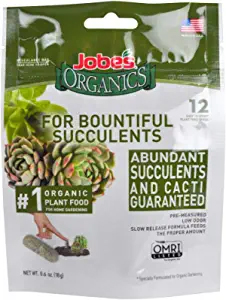 |
Check price on Amazon |
These are easy-to-insert spikes, exquisitely formulated for cacti and succulents. The fertilizer has a slow-release formula that can last your whole year.
It is a pet and people-friendly feed with low odor and provides the plant with all the vital nutrients. You can find it in different spike quantities, ranging from six spikes to fifty spikes.
How to use it?
Poke this aerator spike into the moist soil by forming a small hole and insert the plant food between the pot rim and the plant stem. Please read the label for detailed instructions.
When Should I Fertilize My Jade Plant? How Often To Fertilize The Jade Plant?
Gardeners recommend fertilizing the jade plant once in early spring to accelerate growth and boost summer flowering. Further, you can fertilize again in late summer before the fall and winter.
Fertilizing Jade plants during the winter months are useless because the plant is in the dormancy stage. If you mistakenly feed the plant during this time, it may result in a salt build-up in the topsoil, resulting in fertilizer burn. This in turn can affect the jade plant lifespan.
Generally, fertilizing once every six months can do wonders for your Jade plants. Jade plants are slow-growing succulents. Typically, they grow across the spring and summer from March through August.
Since the growing season lasts six months, you must pour the chosen fertilizer for root and leaf development.
Organic Homemade Fertilizer For Jade Plant
Do you wish to make Jade plant feed at home? Here are some of the best alternatives:
A. Banana peel fertilizer for jade plant
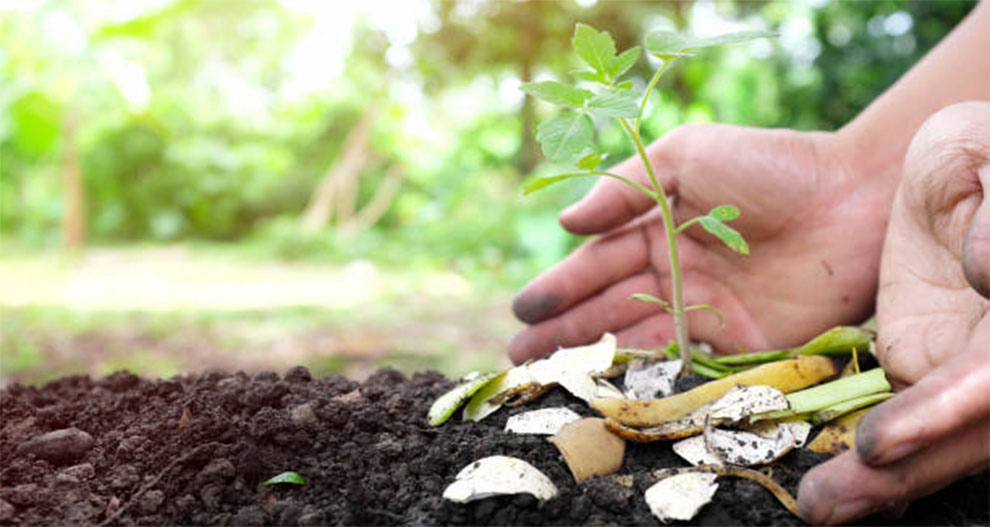
Banana peels are a rich potassium and phosphorous source and can be used as a fertilizer for jade. However, they do not contain nitrogen. So, please add some of it if you only use banana peel as a fertilizer. The peels also contain micronutrients like magnesium and calcium.
How to make it?
- Firstly, determine the amount of fertilizer you need, and now take a bucket and fill it with water or half a glass.
- Dip the banana peels into the water, ensuring that the water covers them and they do not get moldy.
- Let the peels sit in the direct sun for seven to fourteen days.
- Use it to fertilize your Jade plants.
Alternatively, you can make a slow-release fertilizer from the banana peels by dehydrating them completely.
For this, you need to leave them in the open air under the direct sun. After they become crispy and black, you can grind them and add them to the soil.
B. Is coffee good for jade plants?
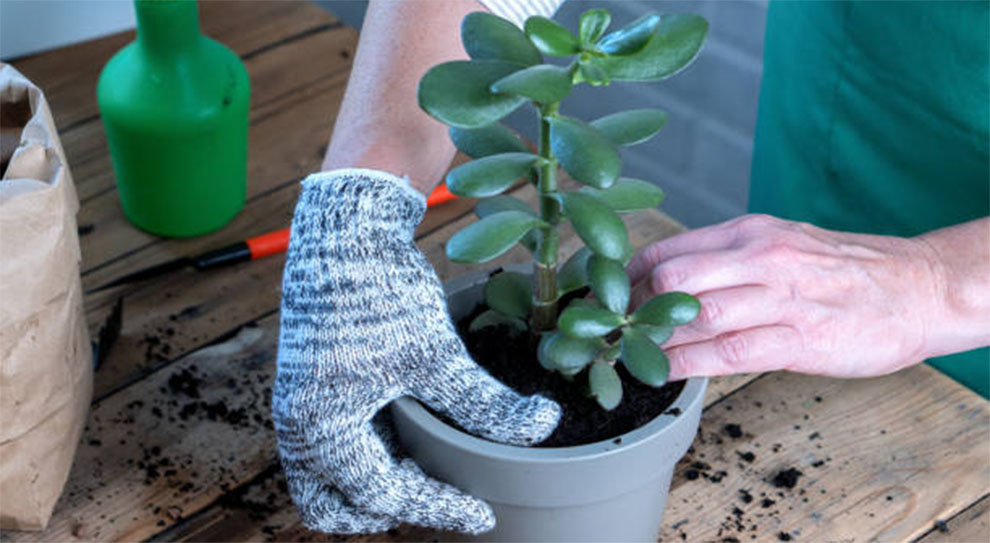
Yes! Used coffee grounds can be one of the best homemade fertilizers for jade plants as they contain two crucial nutrients – potassium and magnesium.
But, these must be heavily diluted and sparingly used as they have a high nitrogen content. It can help your plants maintain their green appearance and grow thicker, stronger stems.
How to make it?
- Use your leftover brewed coffee and mix it with some water.
- Pour this mixture onto your Jade plants.
C. Epsom salt for jade plant
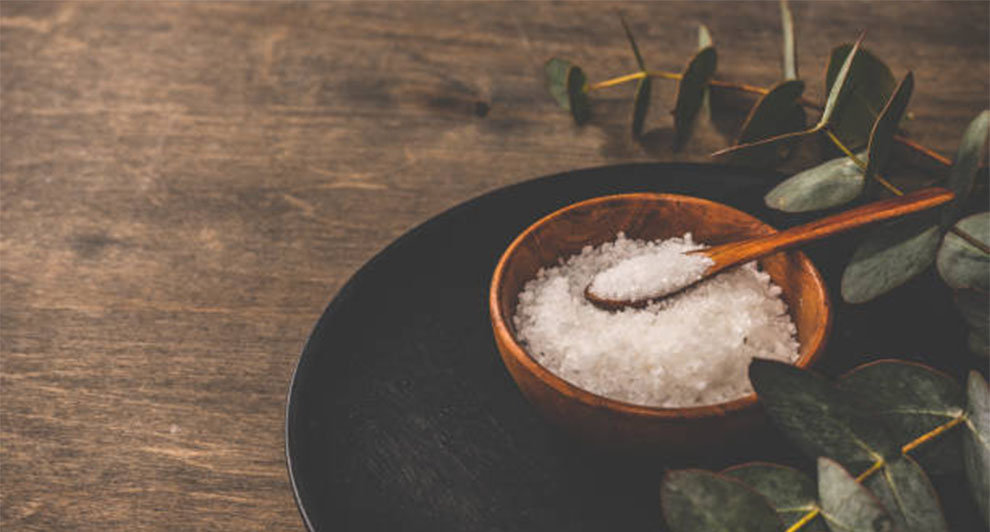
Epsom salt has several benefits and is also very easy to use for jade plants. It has magnesium, which boosts energy, triggers seed germination, and strengthens the cell walls. Moreover, Epsom salt is water-soluble. So, fertilizing takes only a few minutes.
How to use it?
Dissolve two tbsp Epsom salt in a gallon of water and pour it on the Jade plant.
Please note this fertilizer does not offer NPK. Hence, you will have to look for alternative feeds for these macronutrients.
D. Fish Tank Water
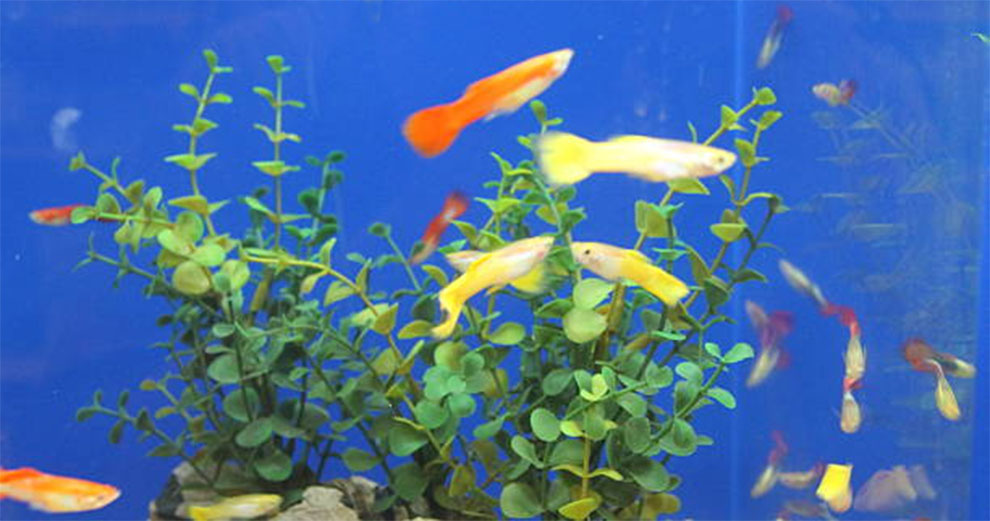
People with a fish tank at home can use it as an organic feed for the jade plants as it has all the added nutrients your plants seek.
How to use it?
When replacing the water in the aquarium, preserve the old water in a bucket, and then use it in desired quantities to water your Jade plants.
E. Do jade plants like tea?
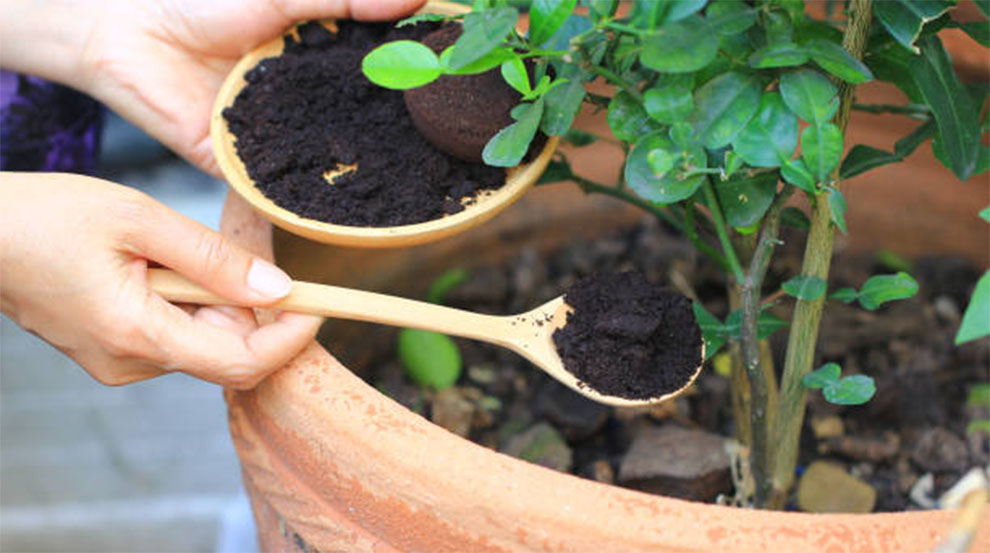
Green tea is one of the oldest natural jade plant fertilizers. It provides the plant with all the vital nutrients like potassium, phosphorous, calcium, and magnesium.
How to make it?
- Take a bucket and fill it with water.
- Add two tea bags to a gallon of water.
- Cover the bucket with a lid, and let it sit for three to four days.
Remove these tea bags and use them anytime your plant needs a healthy, organic boost. Alternatively, you can also add tea leaves directly into the soil. It can be one of the best slow-release plant feeds.
F. Can I add eggshell to jade soil?
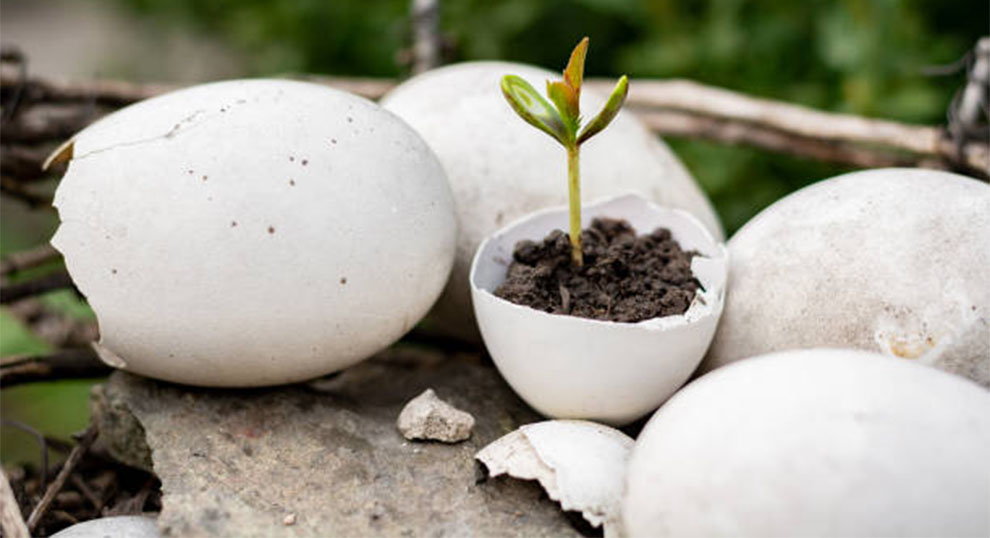
Yes, you can add eggshells to jade soil. Eggshells are a rich calcium source. Calcium helps the plant produce new plant and tissue growth. They also help keep the pests away and strengthen the root system. But egg shells tend to lower acidity. So, be careful with how much you use.
How to make it?
- Collect as many eggshells as possible and properly clean them.
- Let them dry in the oven or the open air under direct sun.
- After they have dried, grind them in a blender and preserve them for future use.
Whenever you feel your Jade plant needs some fertilizing, you can sprinkle the fertilizer onto the soil and mix it well. However, bigger eggshells may take approximately six months to decompose and yield results. Despite that, it is an excellent organic feed.
Giveaway Signs That Your Jade Plant Needs Fertilizers
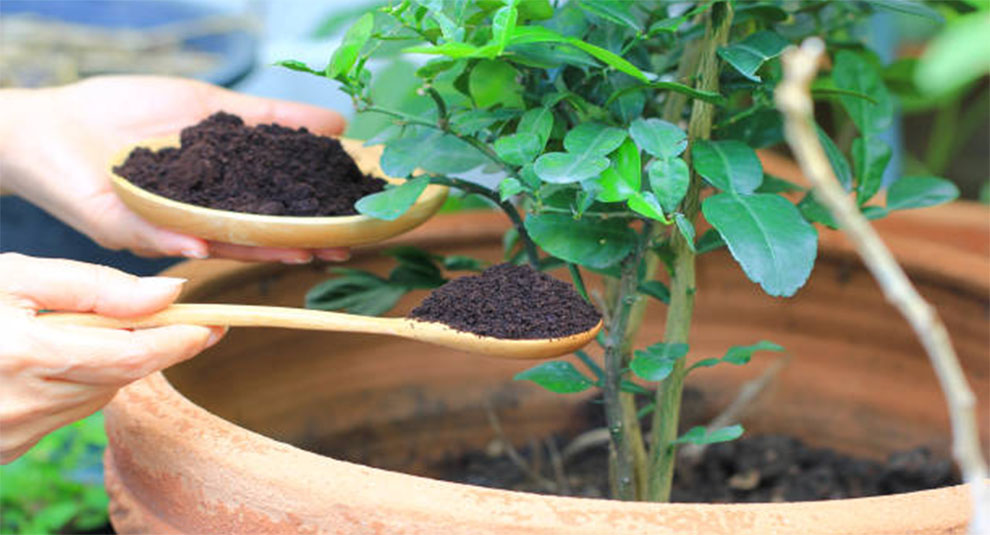
If your jade plant is getting thinner by the day with drooping yellow foliage, it is time to think about fertilizing it.
A. It has a leggy, stunted, or drooping growth
If you do not pour jade plant fertilizer as per requirement, it will struggle and showcase weak growth. It will result in the leaves drooping or the plants becoming stunted or small. Such plants have leggy and thin stems, unable to support lush foliage.
These symptoms may also mean that your plant is not getting ambient humidity, temperature, or light, or you must change its position around the house.
B. Its leaves are yellow
It is a prevalent sign of overwatering or underwatering and is primarily followed by dropping or wilting leaves. But, if the soil feels fine and the watering is adequate, your plant seeks more nutrients.
A plant with green and vibrant leaves generates chlorophyll necessary for photosynthesis. For the plant to produce chlorophyll, it needs magnesium.
So, if the jade leaves start yellowing, it probably indicates a magnesium deficiency. Hence, look for the best fertilizer for jade plants that can meet this deficiency.
How To Fix An Overfertilized Jade?
If you overfertilized a jade plant, fret not. There is still hope, and you can water flush and repot it to save.
Here’s how:
- Trim the droopy, yellow, and wilted foliage. It ensures that your plant can redirect the energy and center itself around producing healthy and new leaves.
- Now, you can do one of two things – Repotting or water flushing.
- If you repotted your plant recently and do not want to intervene in its growth, you must opt for water flushing.
- Take your potted plant and set it in a tub or sink. You can slowly pour or directly put the plant under running water. Always use 4X water of the pot’s volume for flushing the soil.
- Once done, let the substrate drain.
- Let it sit for a few hours as it dries before you can move it to its final location.
Alternatively, take your plant’s healthiest leaves and propagate a new plant. It will give you a healthy, brand-new plant. But, of course, the plant will take a while to grow.
Related: How to plant jade? | Propagating jade in water | Jade plant winter care
Helping Your Struggling Jade Plant – Here’s What To Do!
Ques 1. How do you treat a struggling jade plant?
Ans. There are multiple reasons for a Jade plant showing poor health and growth. The most common one is a problem with their watering schedule. So, inspect the plant closely and examine the problem to find an apt solution. Correcting your day-to-day jade care routine will go to great lengths here.
Ques 2. How do you increase jade plant growth?
Ans. To accelerate the Jade plant’s growth, you must follow the steps:
- Fertilize it twice a year.
- Please keep it in a spot where it receives moderate temperature between sixty-five and seventy-five degrees and bright light.
- Repot it when necessary.
- Regularly water it.
However, it can have severe consequences and even kill your plant if you overdo anything mentioned above.
Ques 3. Which is the best fertilizer for jade bonsai growth?
Ans. Jade plants thrive in nutrient-deficient environments. Thus, they like more balanced and weaker fertilizers with a 10-20-10 mix. You can get the desired fertilizer at the stores, but you must keep away from any feed with a high nitrogen content.
Alternatively, you can also use all-purpose fertilizer, provided you dilute it to one-quarter strength. In addition, fertilizers meant exquisitely for succulents and cacti can also work well for Jade bonsais.
If not, you can craft your jade plant fertilizer with the ingredients from the garden centers. Pulp or potash from banana peels is rich in potassium, the bone meal has good phosphorous content, and the fish emulsion is ideal for the plant’s nitrogen requirements.
